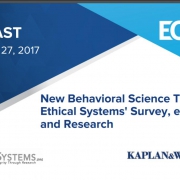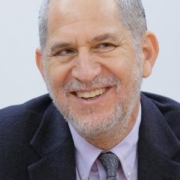How (& Why) to Start Infusing Your Company with Behavioral Science

Leaders looking to foster an ethical workplace culture typically start with what’s familiar. They ask if the right incentive systems are in place, for example, and strive to ensure that employees are properly informed and inspired regarding expectations and codes of conduct. Hopefully, they also look in the mirror, to gauge if they are embodying and modeling the right behaviors. Yet focusing solely on these tools and tactics ignores another powerful way to promote an ethical organizational culture: behavioral science. By taking human nature into account, business leaders can more effectively promote positive habits and behaviors. A key insight is that our decisions are guided not only by a rational calculation of utility—the weighing of perceived positive and negative outcomes—but are also heavily influenced by our environment, our colleagues and by “choice architecture” (how options are presented to us).
A growing number of companies (including Johnson & Johnson, Vanguard, Allstate, Indeed, among others) are building “nudge units” and exploring ways to apply and embed insights and methods from behavioral science. One key idea is that, since we’re constantly looking to conserve mental energy, we’re naturally led to take “shortcuts” in our thinking. We often lighten our “cognitive load” by looking to others for cues (i.e. following social norms, the unwritten rules of behavior); reacting to what’s most visible or salient in our environment; and/or following the path of least resistance. This is reflected in the fact that small, low-cost changes or interventions can have a disproportionate impact on how people actually behave. Take the idea of defaulting employees into retirement savings: Simply requiring them to “opt-out” rather than “opt-in” has an enormous impact on their savings rates.
This reality helps explain an underlying truth, which is that a good deal of unethical or unhelpful behavior is inadvertent and situational. Most employees are not actively plotting to break the rules and game the system. They would like to do the right thing, but the ethical path or set of actions is simply too burdensome—or perhaps too easily forgotten or ignored. So if you are trying to encourage ethical behavior, it’s important to make doing the right thing as intuitive and relatively effortless as possible. For example, if expectations are already clear, an expensive and time-consuming training program may not be the most effective way to promote compliance. What might work better instead is just ensuring that employees simply receive the right reminders—and perhaps a quick dose of positive reinforcement—at the right moment. Along the same lines, simply changing the way that communications are framed can potentially have a significant effect.
So how can business leaders start on this behavioral science journey? A good first step is to identify an existing problem or challenge, ideally one that has been somewhat intractable. DEI and compliance are both fertile areas to consider, as they are areas where companies have invested significantly, with mixed returns.
Next, they should apply a “behavioral science lens” to the processes underpinning these efforts, such as the training, incentives, and communications. This would most likely start with a simple audit, leading to a variety of hypotheses, ranging from small changes in procedure, to timely reminders within the work environment, or perhaps new ways to frame communications.
Subscribe to the Ethical Systems newsletter
Perhaps the most important commonality is that these modest interventions should be testable, in terms of their impact on specific employee behaviors. Measurement is necessary not only to learn what works and why: It also generates the evidence needed to drive internal support and momentum, which will lead to similar efforts to infuse behavioral science and become a more behaviorally informed organization. In fact, Michael Hallsworth, a Behavioral Insights Team colleague of mine, argues that the ultimate goal should be to infuse behavioral science within the “wiring” of an organization, including its processes, incentives, and decision-making procedures, so that, ”Staff apply behavioral science in a deliberate way as part of their ‘business as usual,’ rather than through special projects.”
Perhaps human resources leaders are best positioned to take a more active role in championing behavioral science in their organizations. Why HR? Because it “owns” many functions and processes (such as training, incentives, performance appraisals, etc.) that shape a business culture. There’s an opportunity for enormous positive impact across HR challenges, from improving employee health/well-being and safety, promoting diversity, equity, and inclusion (DEI) to reducing burnout and increasing retention. Not coincidentally, these are all areas in which behavioral-science interventions have demonstrated efficacy.
Of course, it’s important to note that behavioral science is not a “silver bullet.” It can’t (and shouldn’t) replace foundational HR practices. But it can enhance and supplement these efforts, making them more efficient and effective. It is unlikely to thwart or dissuade truly bad actors who consciously seek to deceive, defraud, or steal. But it can help the majority of employees to follow-through on their positive intentions and to report misbehavior when they see it.
In this way, an organization that infuses behavioral science and leverages human nature will be best positioned to foster an ethical culture, by making it easier for employees’ positive intentions to consistently translate to the right actions.
Scott Young is Principal Advisor, Head of Private Sector at the Behavioral Insights Team (@B_I_Tweets) in North America, and the author of three books and over fifty published articles on behavioral science and consumer insights. Young is also a Visiting Fellow at the London School of Economics.








